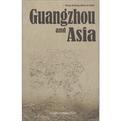广州与亚洲
出版社:王晓玲 广州出版社 (2010-10出版) 作者:王晓玲 编 页数:241
内容概要
《广州与亚洲(英文版)》包括“广州与东亚”、“广州与东南亚”、“广州与南亚”、“广州与中亚、西亚”、“当代广州与亚洲的经济交流”等章节,通过历史、故事等,详细介绍了两千多年来,广州通过陆上和海上航线与亚洲各国开展绵延不绝的友好交往和贸易往来的历史。
书籍目录
Chapter One Guangzhou and Asia Ⅰ. Asia in Brief Ⅱ. China and Asia Ⅲ. Guangzhou and Asia Chapter Two Guangzhou and East Asia Ⅰ.East Asia in Brief Ⅱ. Guangzhou and Jianzhen's Eastward Journey to Japan in the Tang Dynasty (618-907 A.D.) Ⅲ. Guangzhou and the Korean Monks' Westward Pilgrimage in Ⅳ. The Korean Muslims in Guangzhou in the Yuan Dynasty Ⅴ. Trade between Guangzhou and Japan in the Ming Dynasty Ⅵ. Business Contacts between Guangzhou and Japan in the ⅤⅡ. Guangzhou and Japan in Modern Times ⅤⅢ. Guangzhou and Korea in Modern Times Chapter Three Guangzhou and Southeast Asia Ⅰ.Southeast Asia in Brief Ⅱ. The Qin and Han Dynasties (221 B,C. -220 A.D.): the Rising of South China Sea Routes Ⅲ. Guangzhou and Southeast Asia from the Wei Dynasty to the Southern and Northern Dynasties (220-589 A.D.) Ⅳ. Prosperity of Trade in Guangzhou during the Period from the Sui Dynasty to the Five Dynasties (589-960 A.D.) Ⅴ. The Song and Yuan Dynasties (960-1368 A.D.): the Prime Ⅵ. The Ming and Qing Dynasties (1368-1911 A.D.): Ebb and Flow of the Tributary Trade ⅤⅡ. Republic of China: Overseas Chinese and Guangzhou Chapter Four Guangzhou and South Asia Ⅰ.Siuth Asia in Brief Ⅱ. The Spread of Buddhism between Guangzhou and South Ⅲ. Guangzhou and South Asia during the Song and Yuan Dynasties (960-1368 A.D.) Ⅳ. Guangzhou and South Asia during the Ming and Qing Dynasties (1368-1911 A.D.) Ⅴ. Guangzhou and South Asia in Modern Times Chapter Five Guangzhou and Central and West Asia Ⅰ.Central and West Asia in Brief Ⅱ. Communication between Guangzhou and Central and West Ⅲ. Communication between Guangzhou and Central and West Asia during the Tang and Song Dynasties (618-1279 A.D.) …… Chapter Six Contemporary Economic Exchanges Between Guangzhou and Asia Chapter Seven Guangzhou and Sister Cities in Asia Appendix Chronicle of Important Events Bibliography
章节摘录
版权页: 插图: The period of Ming and Qing dynasties again met a watershed in thehistory of China's international relations. The Ming Dynasty had started witha stringently enforced maritime ban on foreign exchanges at the non-governmental level; it maintained only limited taxation and communicationswith other Asian countries. Zheng He's 7 oceanic expeditions,however,expanded foreign relations and changed many things. China's officialinternational relations reached a new summit and further promoted theinfluence of China in Southeast Asia and across the Indian Ocean years afterZheng He's 7 oceanic expeditions. During the end of the 15th century and the beginning of the 16th century,the change of political patterns in West Asia transformed the history of theworld. In 1299,the Turkish dynasty of Osman I founded its state in AsiaMinor and soon developed it into the Ottoman Empire; in 1453,SultanMohammed II conquered Constantinople,ending the Byzantine Empire andmoved his capital there,renaming it Istanbul. He then went on to conquerCairo in 1517 and annihilated the Mamluk Dynasty,and soon conqueredVienna,thus becoming a great empire across Europe,Asia and Africa. Thenew empire cut off the traditional land access of European merchants tooriental goods via the Persian Gulf and the Red Sea,thus blocking thetransport routes between West and East. This blockage of access to the Eastindirectly resulted in the opening of an African maritime route and thediscovery of the America Continent in the15th century. From the 15th century on,along with the colonization of Portugal andSpain's overseas colonization,among othernations that included the expansionism ofthe Netherlands,the United Kingdom andother Western nations,Europe started tobuild up its worldwide,maritime power.This tremendous change in world historynaturally brought significant change toChina's foreign exchanges. In the history ofChinese regional,international relations,most exchanges were conducted in theWest,i.e. the "West Regions" in themiddle ancient times(from the 5th to the 15thcenturies) and the "West Ocean" areaduring early modern times. The change offocus from the "West Regions" to the"West Ocean" signified a shift of focus forforeign exchange in the mid-Ming Dynasty;it was during this period that China'sforeign relations explored new contents andfeatures. It was in this same period thatEuropean capitalist countries took turnsinvading the less-developed world,turningother countries into their colonies. Thus theworld entered into an unparalleled age ofcapitalism. The traditional South Seamerchant route gradually evolved as amaritime trade network that linked the threeoceans of the world,with the distance andscope of voyages far exceeding those ofmiddle ancient times. In the trade networkof colonization and globalization,theWestern commercial power replaced thetraditional Islamic force,while peacefultrade was replaced by war trades. Thesocial nature,commerce and trade systemand religious faith of the early modemcapitalist civilizations and,in particular,theCatholic faith,ran completely againstpreviously prevailing modes of Arabic-Islamic civifizations.
编辑推荐
《广州与亚洲(英文版)》由广州出版社出版。
图书封面
评论、评分、阅读与下载
